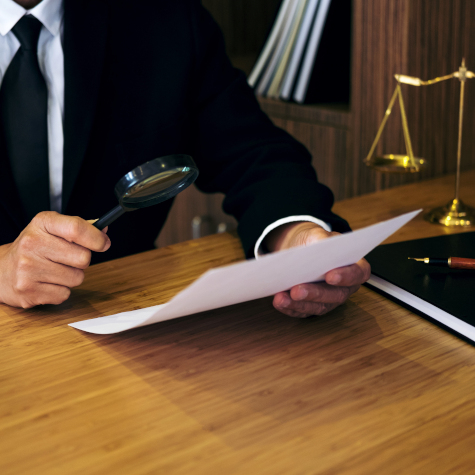
In the intricate landscape of dilapidations claims, the High Court decision in Coldunell Ltd v Hotel Management International Ltd [2022] EWHC 1290 (TCC) has cast a spotlight on the vital role of expert evidence within the built environment. Highlighting both good and poor performance, the case stands as a poignant reminder of the conduct and duties placed on experts.
The case centred around The Mitre Hotel in Surrey, with the landlord seeking compensation for the tenant’s failure to return the property in good and substantial repair, as mandated by a 20-year lease. The claim, totaling nearly £1.1 million, brought into focus the principles that guide assessments of repair standards in such disputes. Over the course of the case, the court considered whether the Defendant was in breach of his obligations under the lease, and what works could be considered appropriate to remedy any outstanding obligations.
The ensuing debate served as a courtroom arena where the credibility and independence of experts were rigorously examined, raising some interesting questions about best practices for the industry. Dissecting court’s findings, it becomes evident that the quality of expert evidence played a decisive role in shaping the outcome.
The contrasting approaches of the landlord’s and tenant’s experts in terms of credibility, independence, and manner of presenting evidence provide valuable insights for legal professionals, experts, and practitioners in the built environment. Read on to learn more about the case, and how it is helping to shape new standards for expert evidence.
Understanding Expert Evidence in Dilapidations Claims
Dilapidations claims are legal actions around property leases, addressing the obligations of tenants to maintain and return the property in a specified condition at the end of their lease term. The term “dilapidations” refers to any disrepair or deterioration of a property, including physical, structural, and decorative aspects. Typically, a landlord initiates a dilapidations claim to seek compensation for the cost of necessary repairs required if the tenant fails to meet their contractual obligations.
In this context, the importance of reliable expert evidence cannot be overstated. Either side can call on professional opinions by qualified individuals such as surveyors, engineers or architects. These professionals may assess the condition of the property, determine the necessary repairs, and provide valuations. These experts play a crucial role in assisting the court by offering informed opinions on technical matters that may be beyond the comprehension of the average person, providing the court with the necessary insights to make informed decisions. Their testimony aids in establishing the extent of disrepair, the scope of required repairs, and the valuation of any financial compensation.
Expert evidence serves as a cornerstone for both parties involved, guiding the court in rendering a fair and equitable judgement. However, the quality of expert evidence in dilapidations claims can raise several challenges. Experts may face allegations of bias, especially when they have previous dealings with one of the involved parties. The credibility of an expert’s findings may be undermined if they make inconsistent or unsupported claims, or fail to conduct thorough inspections, make unsupported claims. Differing interpretations of repair standards can also lead to disputes between experts, impacting the court’s ability to reach a clear decision.
Coldunell v Hotel Management: A Critical Analysis
This brings us back to Coldunell Ltd v Hotel Management International Ltd. The case involved a claim for dilapidations brought forward by the former freeholder of The Mitre Hotel. The case considered whether the Defendant, a well-known hotel operator, was in breach of obligations under the Lease, taking into consideration the hotel’s condition at the end of the Lease.
After a thorough examination of expert evidence from both sides the court favoured the landlord, awarding £597,117 including future costs. With around £465,000 had already been incurred by the landlord, the terminal schedule of dilapidations claimed almost £1.1m in total. The court’s scrutiny of respective experts, their evidence and their manner of presenting it played a pivotal role in shaping this outcome.
The Experts and Their Evidence
The landlord’s expert knew the property well, having previously undertaken inspections there and dealt with an insurance claim. He had also acted as the contract administrator for external works and boiler repairs carried out after the lease. The court commended the expert’s detailed knowledge of the property, measured manner, and independence in delivering evidence.
The tenant’s expert was comparatively inexperienced with the property, which decreased the credibility of his evidence. It became clear over the course of the case that he had not carried out any specific inspection of the property in relation to the court’s criteria, instead relying on data and photos from an older inventory report. He maintained views based on this report in the face of recent contradictory evidence, leading the court to question his independence. This suggestion was supported by the expert’s refusal to answer certain questions from the counsel and challenges to factual evidence presented by the Claimant’s expert.
Accusations of Bias
It is notable that the Defendant sought to discredit the Claimant’s expert evidence based on the fact that he had worked closely with the landlord previously and had already been contracted to work on the dilapidations claim. The Defendant felt that this impeded the expert’s ability to give independent and unbiased evidence. However, the judge dismissed this as a conflict of interest, feeling that it was entirely reasonable that having completed his report on the property and presented his evidence, he could be appointed to oversee necessary works. The court’s overruling in this respect was based on the Claimant’s expert’s measured and independent presentation of his findings, including making concessions to opposing evidence, which showed him to be working with the court rather than for his own gain.
The court’s final ruling underscored the importance of independent, credible and measured expert evidence, urging adherence to the guidelines in CPR Part 35.
Factors Influencing the Quality of Expert Evidence
It’s clear that in cases involving the built environment, the quality of expert evidence significantly influences outcomes, not to mention the cost of the financial imperatives to follow. In the case of Coldunell Ltd v Hotel Management International Ltd three crucial factors were highlighted by the judges as playing pivotal roles in shaping the effectiveness of each experts’ testimony.
Independence
Independence is a crucial cornerstone of credible expert evidence. To demonstrate independence, an expert witness needs to provide impartial, unbiased opinions, free from any external influence. In the built environment, where complex property disputes such as dilapidations claims often unfold, demonstrable independence ensures that expert opinions align with the pursuit of truth rather than advocacy for a particular party.
The Coldunell Ltd v Hotel Management International Ltd case underscores the court’s scrutiny of an expert’s dual roles, highlighting the necessity for a clear demonstration of independence. A legal opponent who lacks compelling evidence may rely on discrediting your evidence to weaken your claim, so it’s important to be ready with evidence-based arguments that legitimise your expert’s claim to independence.
When experts are involved in multiple capacities, such as advising on repairs and overseeing works, transparency becomes crucial to maintain the trust of the court.
Credibility
The credibility of expert witnesses hinges on their authority in the field, competence, and methodology. In the built environment where technical expertise is paramount, a credible expert needs to possess not only the right role and accreditations, but specific and in-depth knowledge of the subject matter at hand. For example, a surveyor called as an expert witness in a dilapidations claim should conduct a thorough and professional inspection of the property, demonstrating their methodology and professional standards while gathering evidence that is specific to the case.
Coldunell v Hotel Management illustrates the court’s reservations when an expert lacks credibility, such as when the tenant’s expert used out-of-date evidence to support his arguments. If he had conducted his own inspection of the property under dispute, his conclusions would have had a more credible basis. By refusing to concede to the substantial body of evidence presented by the opposition, the expert only damaged his credibility further.
The court also praised the landlord’s expert for accepting the limits of his knowledge rather than arguing in an area where he wasn’t an expert. To enhance credibility, experts must be able to demonstrate in-depth knowledge, but also be willing to transparently communicate the limitations of their knowledge.
Measured Presentation
A measured and thoughtful presentation of evidence enhances its impact on the court. The ability to convey complex technical information in a clear and accessible manner distinguishes a skilled expert witness, and makes their professional opinions more compelling.
Coldunell praised the claimant’s surveyor for delivering evidence in a forthright and measured manner. This approach instils confidence in the court, demonstrating the expert’s commitment to an unbiased and transparent presentation of findings. Experts must strive to avoid undue aggression, and maintain composure under cross-examination.
In comparison, the defendant’s surveyor was criticised for his attitude in court, with the court describing him as “obstructive, argumentative and defensive in his answers to cross-examination”. This sort of presentation could tarnish even the most credible evidence, suggesting that the expert had a vested interest in the outcome of the case rather than an independent interest in assisting the court.
CPR Part 35: Expert Witness Best Practices
The Civil Procedure Rules (CPR) Part 35 establishes guidelines for expert evidence presentation in legal proceedings. In the context of built environment claims such as Coldunell Ltd v Hotel Management International Ltd, adherence to these rules is crucial for presenting credible and impartial evidence and ensuring fair and effective dispute resolution.
According to these guidelines, experts are obliged to provide evidence only to the extent reasonably required for resolving the proceedings. This emphasises the need for precision and relevance in presenting evidence related to built environment issues. A concise and specific testimony with supporting evidence will be considered more helpful to the court than a lengthy and tangential assessment.
The court is also given power to restrict expert evidence under these guidelines, meaning that permission from the court is mandatory before presenting expert evidence, and the court is able to limit the number of experts called upon. In cases where multiple parties require expert evidence on a specific issue, the court may direct a single joint expert. This mechanism streamlines the process, emphasising collaboration, independence and efficiency.
Expert evidence needs to be presented to the court in written reports, unless directed otherwise. This gives both parties an opportunity to create a thorough and professional report to present to the court, as well as a verbal summary. The report must adhere to specific requirements set out in the guidelines that emphasise clarity, concision and completeness. Failure to disclose an expert’s written report before the trial will mean that the expert cannot be called upon in court, emphasising the importance of transparency.
The court also holds the authority to initiate discussions between experts at any stage, aiming to address specific objectives. Following these discussions, the court may further direct the experts to draft a statement explicitly for the court’s consideration. This statement is expected to encompass areas of agreement, highlighting the issues on which the experts find common ground, as well as areas of disagreement.
Critically, these discussions are confidential, unless all involved parties explicitly agree to a different arrangement. This confidentiality is designed to facilitate candid and open dialogue among the experts, ensuring that their collaborative efforts are not constrained by concerns about potential prejudicial impacts on the trial.
The CPR also discusses the experts’ duty to the court, stating that the legal duty of experts is to assist the court, surpassing any obligation to the party instructing or paying them. This underscores the importance of impartiality and unbiased testimony, both for claimants or defendants selecting their experts, and for the experts themselves. The written report must include a signed statement that the expert understands and complies to this duty.
Conclusion
In conclusion, the Coldunell Ltd v Hotel Management International Ltd case underscores the indispensable role of expert witnesses in built environment claims. The court’s emphasis on the conduct and duties of experts during this case serves as a poignant reminder of the critical need for unwavering independence, credibility, and a measured approach in presenting evidence.
As the legal landscape constantly evolves, experts must not only align with established principles and frameworks like CPR Part 35, but also engage in continuous professional development to stay abreast of industry standards and accurately represent their area of expertise.
The implications of this case extend beyond its specific legal context as a call to action for all experts involved in built environment claims. It urges a commitment to credibility, transparency and collaborative engagement, fostering an environment where high-quality independent expert evidence is widely available and identifiable.
As the legal community reflects on the lessons learned from this case, it is critical for experts to uphold the highest standards, ensuring their contributions not only withstand legal scrutiny but also contribute to the integrity and efficacy of the justice system.

